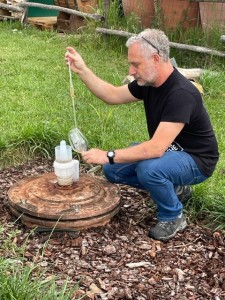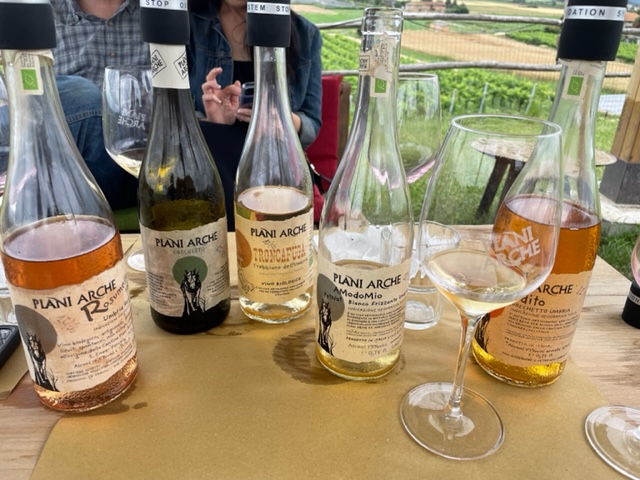By Neil Duarte
The history of winemaking dates back to at least 6,000 BC, as evidence from the Republic of Georgia in the Caucasus region has revealed. The people of this area found that by burying the pressed grapes in the ground, the grapes would ferment into wine. Thus came into use amphora, large ceramic vessels that were buried in the ground and into which the grapes were poured for fermentation. In the length of time that has passed since that discovery, winemaking has come a long way. Cement and stainless steel tanks replaced the amphora and various woods were used in the aging process.
For at least the past 10 to 15 years in various regions of Italy,though, there has been a rediscovery of the benefit and use of amphora in the process of making wine. A number of years ago I wrote about several excellent wineries in Sicily that employed clay amphora in their wine-making process. These wineries, COS and Frank Cornelissen, made extensive use of buried amphora in the aging process for their wines. Today their wines are internationally known and highly regarded.

Roberto de Phillipo tests wine from his amphora. PHOTO: TERRY DUARTE.
He has only added this in the past year, and is still in the initial learning phases. He has buried one amphora with white Grechetto wine and one with red Sangiovese wine. We sampled these two wines and I believe that with further aging they will produce some interesting and excellent wines.
We now move on to the wines that we tasted. Our first wine was a 2021 AModoMio, a 13% alcohol Bianco Frizzante Umbria offering. The AModoMio was made from 100% Umbrian Trebbiano grapes. If you are unfamiliar with the term “frizzante”, it means a sparkling wine that is under 1-2 atmospheres pressure in the bottle. The term “spumante” refers to sparkling wines that are under 5-6 atmospheres pressure in the bottle. The AModoMio was fermented in stainless steel tanks on the lees. It was straw yellow color and finished pleasantly smooth. I am not a sparkling lover, but I liked this wine and rated it a 90.
Next we tried a 2022 Rosumella Umbria Rosè, a 14.5%-alcohol wine made from 60% Sangiovese grapes and 40% Sagrantino grapes. Its fermentation was in stainless steel tanks with no skin contact and using wild yeasts. The Rosumella was a peach color and finished very nice and medium. I really liked this wine and rated it a 91.
Our last wine was a 2021 Troncafuga IGT Sangiovese dell’Umbria. This 14% alcohol, non-filtered offering was made from 85% Sangiovese grapes with the remaining 15% other local red grapes. The Troncafuga had a 10 day maceration followed by fermentation with wild yeasts. Aging was in stainless steel tanks followed by a short period in the bottle. This wine finished medium long and very smooth. I liked the Troncafuga very much and rated it a 92.
Plani Arche is a small, family-owned winery that produces about 30,000 bottles per year. It is proof that good things can come from smaller wineries. My thanks as always go out to Roberto and Elena Di Filippo for their wonderful hospitality. Their wines are excellent and I highly recommend them.

A selection of Plani Arche wines. PHOTO: TERRY DUARTE.




